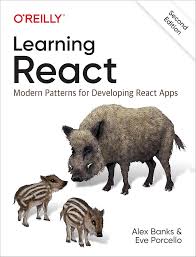Full Stack React Development: A Comprehensive White Paper
Introduction
Full stack development, encompassing both front-end and back-end technologies, has gained significant traction in recent years. React, a JavaScript library for building user interfaces, has emerged as a popular choice for front-end development. This white paper aims to provide a comprehensive overview of full stack React development, covering key concepts, tools, best practices, and real-world applications.
Front-End Development with React
Core Concepts:
- JSX: A syntax extension for JavaScript that allows HTML-like structures to be embedded within JavaScript code, making it more intuitive for building UI components.
- Components: Reusable building blocks of a React application, encapsulating logic and rendering associated UI elements.
- State: Data that can change over time, triggering re-renders of components when updated.
- Props: Data passed down from parent components to child components, enabling communication and data flow.
- Hooks: Functions that allow you to use state and other React features without writing a class component.
Key Tools and Libraries:
- Create React App: A tool that sets up a modern React development environment with minimal configuration.
- Redux: A predictable state container for JavaScript applications, helping manage complex state management.
- React Router: A library for handling routing and navigation within React applications.
- styled-components: A CSS-in-JS library that allows you to style React components using JavaScript, enabling theming and dynamic styling.
- Testing Libraries: Jest, React Testing Library, and Enzyme for unit testing and component testing.
Best Practices:
- Component Composition: Break down complex UI into smaller, reusable components for better maintainability and reusability.
- State Management: Choose the appropriate state management solution (local state, context API, or Redux) based on the complexity of your application.
- Performance Optimization: Use techniques like memoization, code splitting, and lazy loading to improve application performance.
- Accessibility: Ensure your React applications are accessible to users with disabilities by following accessibility guidelines (WCAG).
- Testing: Write comprehensive tests (unit, integration, and end-to-end) to maintain code quality and catch bugs early.
Back-End Development for React Applications
Popular Choices:
- Node.js: A JavaScript runtime environment that allows you to build server-side applications using JavaScript.
- Express.js: A popular web framework for Node.js, providing a robust foundation for building API servers.
- GraphQL: A query language for APIs that provides a flexible and efficient way to fetch data.
- RESTful APIs: A set of architectural principles for designing web APIs based on HTTP methods (GET, POST, PUT, DELETE).
Integration with React:
- Data Fetching: Use libraries like Axios, Fetch API, or React Query to fetch data from the back-end and update the React state.
- API Routing: Define routes on the back-end to handle different requests and return appropriate responses.
- Authentication and Authorization: Implement mechanisms to protect sensitive data and control access to your application.
Full Stack Development Workflow
- Planning and Design: Define the application's requirements, user stories, and overall architecture.
- Front-End Development: Build the user interface using React components, incorporating state management, routing, and styling.
- Back-End Development: Develop the server-side logic using Node.js, Express.js, or other frameworks, handling data fetching, API routing, and authentication.
- Integration: Connect the front-end and back-end components, ensuring they communicate effectively.
- Testing and Deployment: Thoroughly test the application to identify and fix bugs, then deploy it to a production environment.
Real-World Applications
Full stack React development is used in a wide range of applications, including:
- Web Applications: E-commerce platforms, social media networks, content management systems.
- Mobile Applications: Cross-platform mobile apps built using technologies like React Native.
- Single-Page Applications (SPAs): Web applications that load a single HTML page and dynamically update content as needed.
References
- Official React Documentation: https://legacy.reactjs.org/
- Create React App: https://github.com/gitname/react-gh-pages
- Redux: https://redux.js.org/
- React Router: https://reacttraining.com/react-router
- styled-components: https://styled-components.com/docs/basics
- Node.js: https://nodejs.org/en
- Express.js: https://expressjs.com/
- GraphQL: https://graphql.org/learn/
- REST API Design: https://learn.microsoft.com/en-us/azure/architecture/best-practices/api-design
Conclusion
Full stack React development offers a powerful and versatile approach to building modern web applications. By mastering the core concepts of React, leveraging the right tools and libraries, and following best practices, developers can create scalable, maintainable, and high-performing applications.



